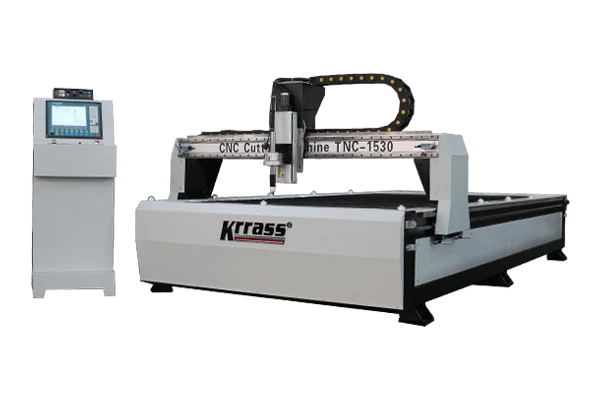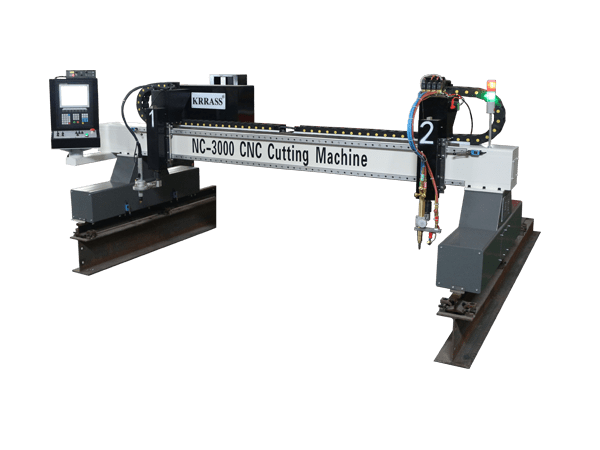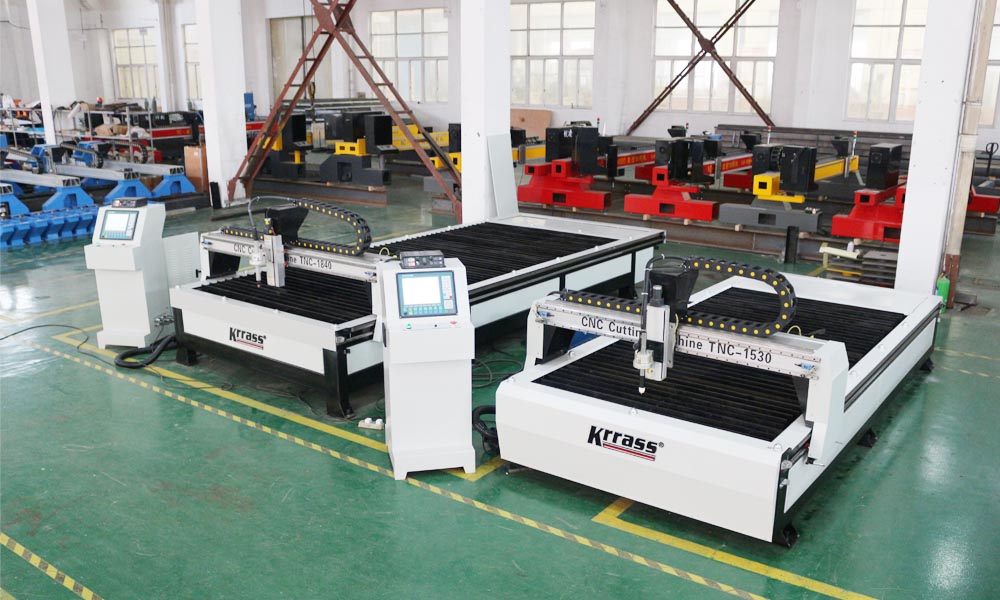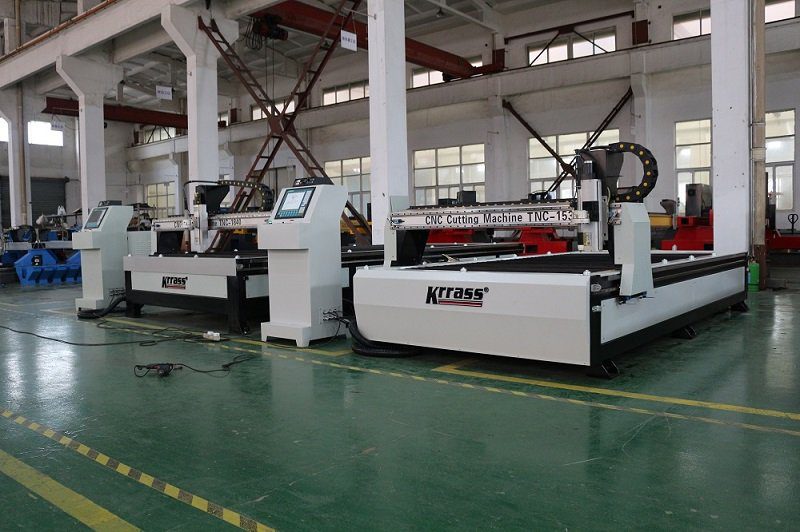This guide is meticulously crafted to navigate you through the intricacies of Plasma Cutting Machines, delving into their components, types, and applications. Whether you're a seasoned professional or new to the field, our insights will illuminate the path to understanding this advanced technology.
- What is Plasma Cutting Technology
- Components of a Plasma Cutting Machine
- Types of Plasma Cutters
- How Plasma Cutting Works
- Industrial Applications
- Technical Aspects
- Laser vs Plasma Cutting Machine
- Choosing the Right Plasma Cutter
What is Plasma Cutting Technology?
Plasma cutting technology, a cornerstone in the fabrication and metalworking industries, stands out for its precision, efficiency, and versatility. This innovative method uses a plasma torch to cut through various materials, most notably metals such as steel, stainless steel, aluminum, brass, and copper. But what exactly makes it tick?
At its core, plasma cutting involves ionizing gas to create plasma, a highly energetic state of matter. When this plasma is directed through a narrow nozzle at high speed towards the metal, it melts the material, enabling precise and clean cuts. This technique is not just limited to cutting; it's also used for gouging, beveling, and welding, showcasing its multipurpose nature.
The efficiency of plasma cutting machines is a game-changer for manufacturers, like us, who specialize in this technology. These machines come in various configurations, including handheld and mechanized systems, adaptable to both small-scale and large-scale operations. The versatility of plasma cutting machines, such as the Plasma Oxygen Cutting Machine, allows for their application in numerous industries, ranging from automotive to construction and beyond.

Components of a Plasma Cutting Machine
Understanding the anatomy of a plasma cutting machine is crucial for appreciating its efficiency and capabilities. Each component plays a pivotal role in ensuring precise and effective cutting. Let's break down these components:
Power Supply: The power supply is the backbone of a plasma cutter, converting AC voltage into a smooth, constant DC voltage. This power is essential for maintaining the plasma arc throughout the cutting process.
Plasma Torch: The heart of the system, the plasma torch, is where the magic happens. It is designed to provide proper alignment and cooling of the consumables. The primary consumable parts inside the torch include the electrode, nozzle, and swirl ring.
Arc Starting Console (ASC): This component generates a high frequency to create the plasma arc. The ASC is vital for initiating the plasma cutting process.
Workpiece: While not a part of the machine itself, the workpiece is essential. It completes the electrical circuit, thus is a critical component of the plasma cutting process.
Air Compressor: Some plasma cutting machines, like the Plasma Oxygen Cutting Machine, incorporate an air compressor to provide the pressurized air necessary for the plasma cutting process. This air is also used to cool and expel the molten metal from the cut.
Types of Plasma Cutters
Plasma cutting technology has evolved, offering various types tailored to diverse cutting needs. The two primary categories are Conventional Plasma Cutters and High-Definition Plasma Cutters. Each type has distinct features and applications, making them suited for specific tasks in metal fabrication.
Conventional Plasma Cutters
Conventional Plasma Cutters are known for their versatility and are widely used in many fabrication shops. These cutters use a high voltage electrical arc and a compressed gas, such as air, to cut through metal. They are particularly effective for cutting thicker metal plates and are valued for their speed and efficiency. Despite their lower initial cost, conventional plasma cutters can sometimes leave behind a rougher edge finish, which might require additional finishing work.
High-Definition Plasma Cutters
High-Definition Plasma Cutters, on the other hand, represent a more advanced technology. They are designed for precision, producing a much finer and higher quality cut compared to conventional plasma cutters. These cutters utilize a tightly focused arc and often include computer controls to ensure precision and consistency. Ideal for detailed and intricate work, high-definition plasma cutters are commonly used in industries where precision is paramount, such as automotive and aerospace manufacturing.
How Plasma Cutting Works
Plasma cutting is a sophisticated process that combines electrical and gas technologies to cut through various materials. Understanding how the plasma arc forms and the role of gases in this process is key to appreciating the efficiency and versatility of plasma cutting machines.
The Plasma Arc Formation
The plasma arc forms when an electric current passes through a gas that is blown through a narrow opening. This process begins with the gas (often air, nitrogen, or oxygen) being subjected to extremely high temperatures, causing it to ionize and become a conductive plasma. This plasma, driven by the electrical current from the cutter's power supply, forms an intense, focused arc that is capable of melting metal at the point of contact. The intense heat of the plasma arc, reaching up to 40,000 degrees Fahrenheit, easily slices through metal, allowing for precise and efficient cutting.
Role of Gases in Plasma Cutting
Gases play a crucial role in the plasma cutting process. The choice of gas affects the quality of the cut, the speed of cutting, and the thickness of the metal that can be cut. For instance, using air as the plasma gas is cost-effective and suitable for cutting steel, stainless steel, and aluminum. Nitrogen, on the other hand, is used for higher current levels and provides excellent cut quality, especially on stainless steel and aluminum. For the most precise and high-quality cuts, a combination of gases, such as hydrogen and nitrogen, can be used, especially in high-definition plasma cutting systems.

Industrial Applications of Plasma Cutting
The versatility of plasma cutting technology extends to various industries, each benefiting from its precision, speed, and adaptability. Let's explore some key areas where plasma cutting machines, including those we manufacture, make a significant impact.
Automotive Industry
In the automotive sector, plasma cutting plays a crucial role in manufacturing and customization. It is used for cutting complex parts with precision, such as chassis components and intricate metal panels. This technology ensures high-quality cuts, essential for the safety and aesthetics of automotive products.
Aerospace Industry
The aerospace industry demands utmost precision and quality, where even a small error can have significant consequences. Plasma cutting machines, especially high-definition models, are used for cutting and shaping aircraft components. Their ability to handle high-strength materials like titanium and stainless steel makes them invaluable in this sector.
Metal Sculptures
Art meets technology in the creation of metal sculptures. Artists and sculptors use plasma cutters to carve intricate designs and shapes, transforming metal sheets into stunning artworks. The precision and versatility of plasma cutting enable the realization of complex artistic visions in metal.
Custom Signage
Custom signage, a burgeoning industry, heavily relies on plasma cutting. From commercial signs to decorative pieces, plasma cutters provide the capability to create detailed and durable signs out of various metals. This application highlights the machine's ability to deliver both functional and aesthetic value.
Technical Aspects of Plasma Cutting
Plasma cutting is a technique defined by its technical precision and versatility. Understanding the technicalities like suitable metals, cutting speeds, tolerances, and factors affecting precision is crucial for optimal use of plasma cutting machines.
Metals Suited for Plasma Cutting
Plasma cutting is highly effective for a wide range of metals, including steel, stainless steel, aluminum, brass, and copper. Its versatility allows for application across diverse industries, accommodating various metal types and thicknesses.
Thickness and Cutting Speed
The thickness of the metal significantly impacts the cutting speed. Generally, thinner materials can be cut faster than thicker ones. However, the type of plasma cutter also plays a role; high-definition plasma systems can cut thicker materials more efficiently than conventional plasma cutters.
Tolerances in Plasma Cutting
Tolerance refers to the degree of variation acceptable in the size and shape of the cut. High-definition plasma cutting systems offer greater precision, typically maintaining tighter tolerances than conventional systems. This precision is crucial in industries where even a small deviation can be critical.
Factors Influencing Cutting Precision
Several factors affect the precision of plasma cutting. These include the quality of the plasma cutter, the type and condition of the consumables, the steadiness of the power supply, and the control system used. Additionally, operator skill and the cutting environment (such as the presence of drafts or humidity) can also influence the accuracy of the cuts.
Laser vs. Plasma Cutting Machine
In the world of industrial cutting, two prominent technologies stand out: Laser Cutting and Plasma Cutting. Each has its unique strengths and ideal applications. Understanding their differences helps in selecting the right technology for specific cutting needs.
Laser Cutting Machines
Laser cutting machines utilize a focused beam of light to melt, burn, or vaporize the material, offering high precision and clean cuts. These machines are typically used for intricate and detailed work, especially on thinner materials. Laser cutters are highly accurate, but their efficiency decreases with the increase in material thickness. They are ideal for materials like wood, plastics, glass, and thin metals.
Plasma Cutting Machines
Plasma cutting, on the other hand, is more versatile when it comes to metal cutting, especially for thicker materials. It uses an ionized gas to cut through metal with incredible speed and efficiency. While not as precise as laser cutters, plasma cutters are more cost-effective for cutting thicker metal sheets. They are commonly used for large-scale industrial applications like automotive and shipbuilding.

Choosing the Right Plasma Cutter
Selecting the right plasma cutter is crucial for achieving optimal performance in your cutting tasks. Various factors should be considered to ensure that the chosen machine meets your specific requirements. Here’s a guide to help you make an informed decision.
Consider the Material Type and Thickness
The type and thickness of the material you plan to cut are primary considerations. Different plasma cutters are designed to handle various metal types and thicknesses efficiently. Ensure the cutter you choose can manage the specific metals and thicknesses you'll be working with most frequently.
Understand the Cutting Capacity
Cutting capacity is a key factor in choosing a plasma cutter. This includes not only the maximum thickness the cutter can handle but also the speed at which it can operate effectively. A machine that cuts at a higher speed can increase productivity, especially for industrial-scale projects.
Evaluate Power Requirements and Portability
Consider the power requirements of the plasma cutter and whether it aligns with your available power supply. Also, if your work requires mobility, look for a machine that offers portability without compromising on power and efficiency.
Check for Additional Features
Modern plasma cutters come with various additional features, such as built-in air compressors, pilot arcs, and different torch styles. These features can enhance usability and efficiency, depending on your specific cutting needs.
Choosing the Best Plasma Cutting Machine
In conclusion, selecting the right plasma cutter is pivotal for achieving unparalleled precision and efficiency in your cutting projects. Embrace the advanced technology and expert craftsmanship offered by Krrass, China's leading Plasma Cutting Machine manufacturer and solution provider. With a comprehensive range of machines tailored to meet diverse industrial needs, Krrass stands at the forefront of innovation. Explore our world-class plasma cutting solutions and take the first step towards cutting-edge efficiency at www.krrass.com.
Read More:
What is the difference between fiber laser cutting machine and plasma cutting machine?





